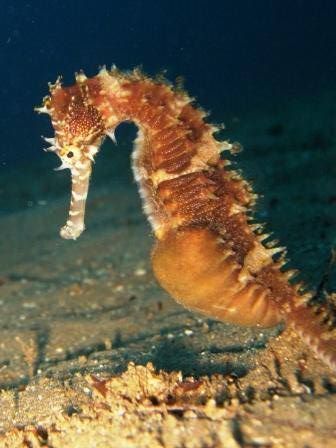Seahorse giving birth (with a manatee in the background)!
Our featured iSeahorse observation for March comes to us from West Palm Beach, Florida. This interesting picture was captured by iSeahorse user katieg628. It shows the lined seahorse, Hippocampus erectus, giving birth to many juvenile seahorses. Seahorses and their relatives are among the only fish species to give live birth, as can be seen here in the photo.

Males brood the eggs in their brood pouch and then give birth to live young, which travel into the water column and float with currents for dispersal.
In addition to being lucky enough to catch a live seahorse birth, Katie also unknowingly caught a glimpse of a manatee (Trichechus manatus)! The manatee shares habitat with seahorses in the western Atlantic. Both the lined seahorse and the manatee are considered Vulnerable to extinction on the IUCN Red List . Seahorses share their ocean homes with many other important marine species, which is a big part of why Project Seahorse operates under the mantra "Saving seahorses means saving our seas" — protecting habitat that seahorses depend on also helps protect the homes of countless other species, contributing greatly to the overall health of our oceans and planet.
Want to receive all the latest news from iSeahorse and Project Seahorse? Join our quarterly newsletter today!
(We respect your privacy and won’t share your email address with other organizations or individuals.)






